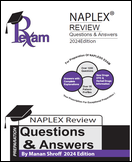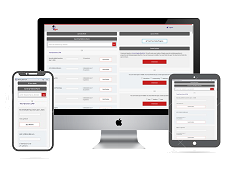
Targiniq ER is an extended-release/long-acting (ER/LA) opioid analgesic to treat pain severe enough to require daily, around-the-clock, long-term opioid treatment and for which alternative treatment options are inadequate. Which of the following drugs provides abuse-deterrent property to Targiniq ER?
a. Oxycodone
b. Naltrexone
c. Naloxone
d. Methadone
e. Atropine
Targiniq ER is an extended-release/long-acting (ER/LA) opioid analgesic to treat pain severe enough to require daily, around-the-clock, long-term opioid treatment and for which alternative treatment options are inadequate. Which of the following drugs provides abuse-deterrent property to Targiniq ER?
a. Oxycodone
b. Naltrexone
c. Naloxone
d. Methadone
e. Atropine
Answer: (c) Naloxone. The active ingredients found in Targiniq ER are Oxycodone and Naloxone. It is an extended-release/long-acting (ER/LA) opioid analgesic to treat pain severe enough to require daily, around-the-clock, long-term opioid treatment and for which alternative treatment options are inadequate.
Targiniq ER has properties that are expected to deter, but not totally prevent, abuse of the drug by snorting and injection. When crushed and snorted, or crushed, dissolved and injected, the naloxone in Targiniq ER blocks the euphoric effects of oxycodone, making it less liked by abusers than oxycodone alone. Naloxone is a medication that is commonly used to reverse the effects of opioid overdose. Targiniq ER can still be abused, including when taken orally (by mouth), which is currently the most common way oxycodone is abused.
Constipation, nausea, sleepiness, vomiting, tiredness, headache, dizziness, abdominal pain, anxiety, and sweating are commonly reported side effects of (Oxycodone + Naloxone) Targiniq ER.
www.pharmacyexam.com Try Our Naplex QBank.




